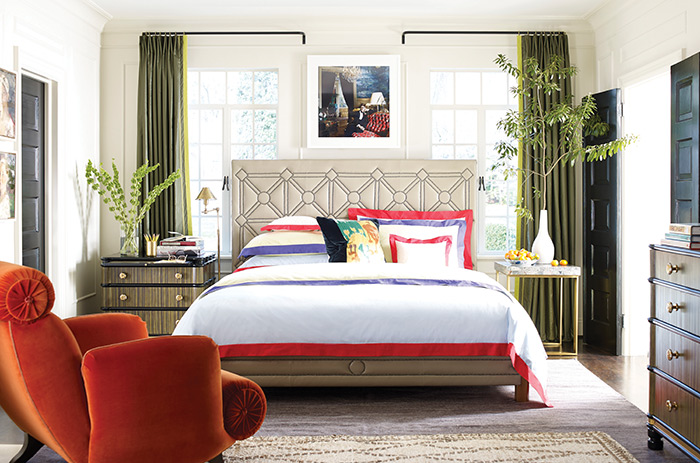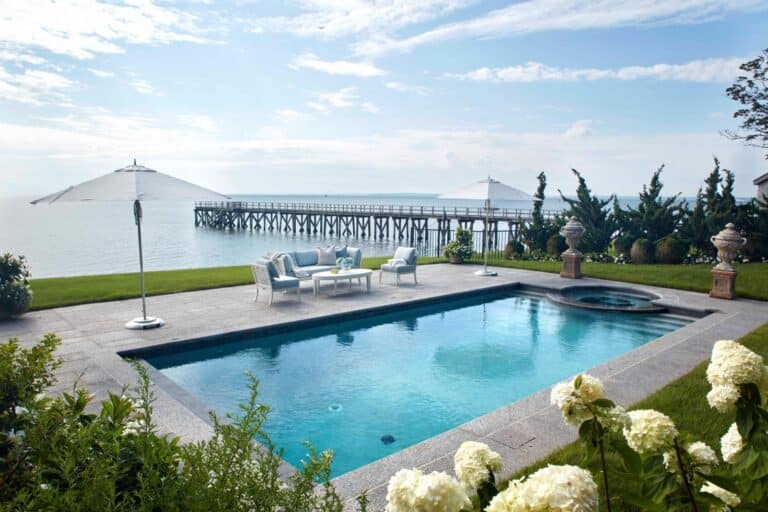The celebrated interior decorator draws on both history and trends to create uniquely American spaces. Here, he shares insight into his latest book, his newest projects and his favorite kind of client.
By any measure, Jeffrey Bilhuber ranks among the handful of American interior designers who have achieved worldwide renown. His artistic vision—one informed by history, yet defined by innovation—has led him to create instantly iconic spaces and accrue a long list of clients that includes such luminaries as Michael Douglas, Iman and the late David Bowie, Halston, and Hubert de Givenchy. In March, the famed New York School of Interior Design awarded him its prestigious Albert Hadley Lifetime Achievement Award.
Yet while he is elite, Bilhuber is not exclusive, as his legions of fans know. Instead he aims to spread his aesthetic far and wide through a variety of licensed collections, including carpets, porcelain dinnerware, furniture and floor tiles. Then there are his well-loved décor books, which help even beginners put together thoughtfully balanced rooms.
In March, Bilhuber published a new book—his fifth to date—entitled Everyday Decorating. A marked departure from his previous works, it features chapters titled with adjectives such as “Cozy” and “Happy,” and filled with lush images and pithy insights.
What made you see a need for this particular book?
It circles back to my first book, Design Basics, which continues to sell very, very well, 12 years after its publication. Wherever I turn, people come up to me and thank me for Design Basics. It’s still actively used, actively enjoyed, actively shared. We needed to follow that up with a book that is a similar travail, a similar price point and doing a similar concept but in large issue. So obviously, it reflects evolving tastes and evolving living standards, too. That’s really what the book does: It builds on that premise that we all benefit from good information. And if we know what we’re asking for, we’re going to like what we get when it arrives.
You mention evolution. Has your approach to writing evolved?
I found that in the last six years—especially since my [last] book, American Master, was published, which was three years ago—the way that we source information, and the way that we retrieve it and retain it, is completely different from before. Our minds are working much faster. The way that we started to build this book was as a printable Instagram. There are always things that I see on Instagram that I wish I could pull back up. We wanted to build a printed Instagram [with] great projects, wonderful, timeless works that have value built into them, and then help people understand why they are drawn to these rooms.
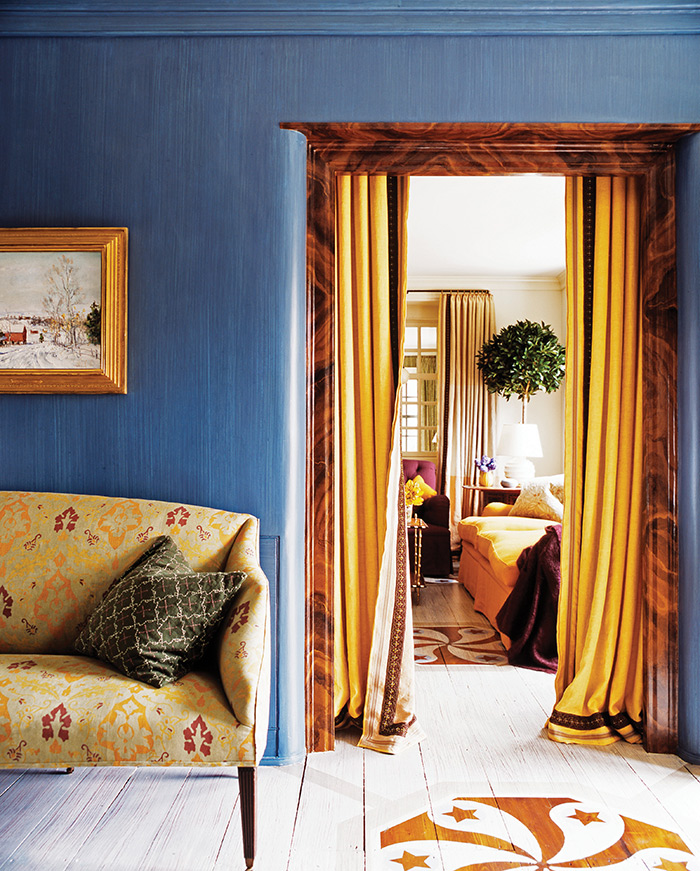
Your designs have a distinctly American feel. How do you incorporate that with European and other influences?
What we do as American designers is that we sample. If you ask someone to define what a French room looks like, they have a very clear image. They also get a clear image of what an English room looks like, or an Asian or Russian room. But if you ask them to tell you what an American room is like, it’s blurry; they can’t figure it out. That’s an asset, because we’re the only culture as a young society that’s asked to sample other cultures in other periods of time. We’re not that specific. I’m allowed to put an Italian commode next to a modern sofa with a 19th-century painting. As American designers, we have a long history of sampling the very best, regardless of price or place.
What sets you apart as a designer?
I’ve managed to reach the widest audience possible at this level of design. And I think it’s very clear to my clients and to consumers that I’m not the most expensive decorator in the world nor am I the least expensive decorator in the world. But what I bring to the table is value. It’s understood, and people are as proud of our products as they are of our projects. So they hire me to decorate and design their entire apartments. But if they don’t have that opportunity, they have plenty of platforms where they can get a piece of me, if not all of me, whether it’s a book, my [Stark] carpet collection, my fireplace surrounds with Chesney’s [launching this fall] or my lacquer collections for The Lacquer Company. And at this level of design, it’s very rare that people have that kind of unlimited access to this much experience and expertise.
What’s the first thing you do when working with a new client?
Basically [we] allocate our resources. What we want to do is analyze what are the visual goals, and then compare that to what the financial allocations are, because you have to align both of them. And if your financial allocations don’t align with your visual goals, one of those two criteria has to change.
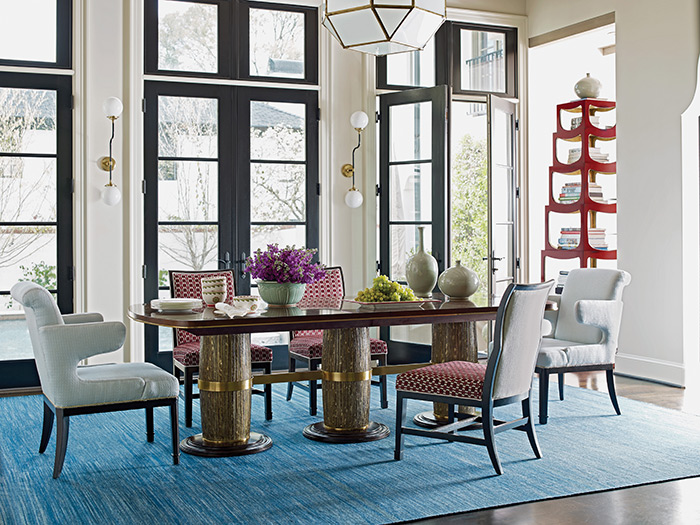
Do you ever have to talk a client into something?
Yes, because they’re coming to me to gain their confidence. They may have the opportunity to purchase what they would like, or they have the interest, but they can’t figure out why, if they’re making purchases, things don’t go together or why they don’t give them pleasure when they’ve arrived. So yes, of course you want to turn to someone whose profession it is to help people make intelligent, enlightened decisions, and so they’re going to say “Jeffrey, can you tell me what I should do?” That’s the best kind of working relationship. I must take their hands and move them to another place. Once they get to that new place, they can never look back to the old place. They will have moved forward.
Are there any particular color combinations you’re currently feeling excited about?
We’re tinkering with the browns and greens and yellows especially, and moving them off from center. So what you’re seeing is that chromium yellow or cobalt blue is no longer the answer that you’re looking for. We’d be looking for yellows that are more muted—a little more settled or autumnal in their perspectives. Blues that are more gray-blue versus cobalt; greens that are more pine yellow base than in the blue base. So these are the combinations that you will see returning in clothing, and that are now infiltrating furniture.
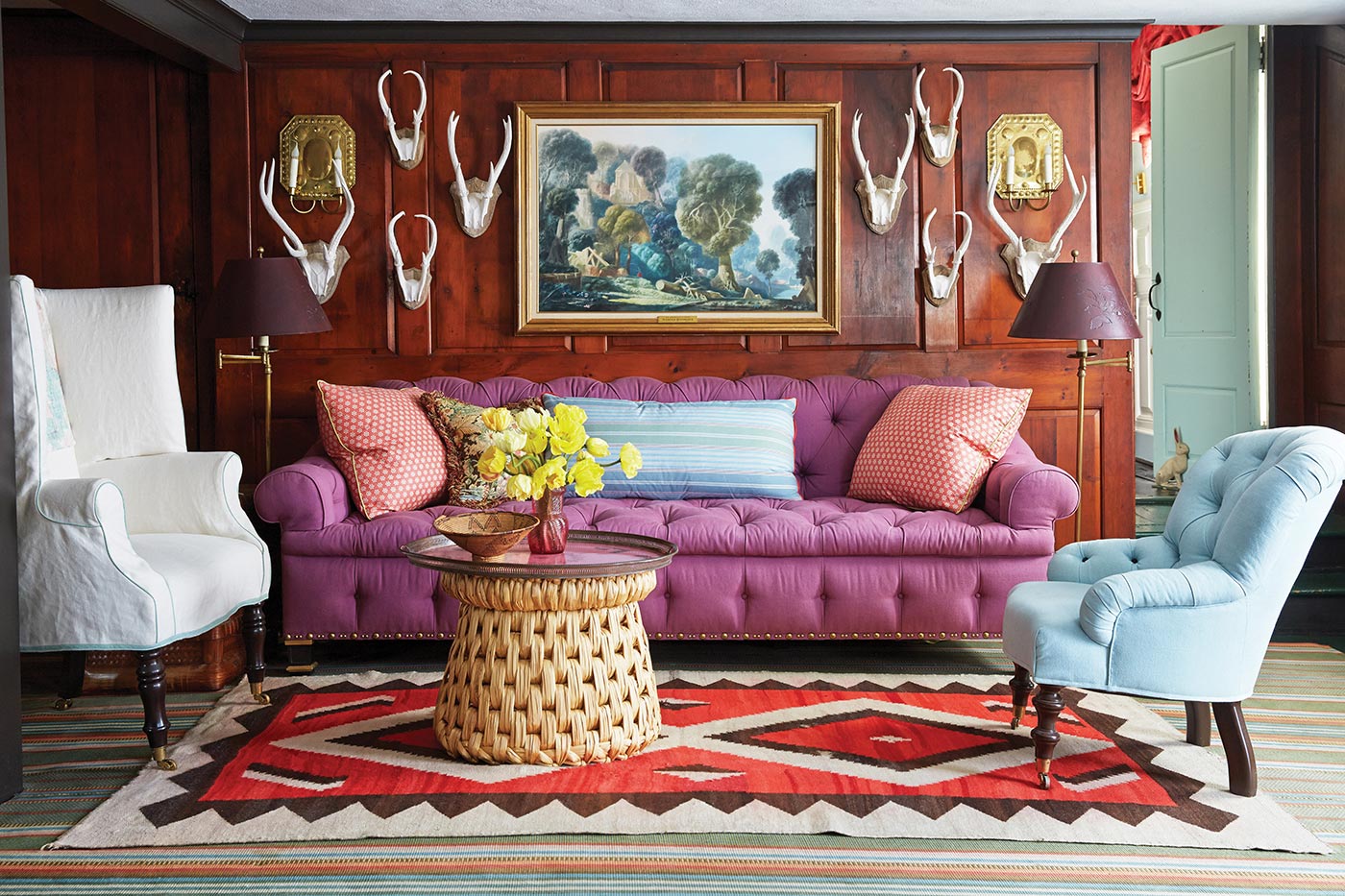
What is inspiring you right now?
I spent yesterday at the Museum of Modern Art in their design store, and I was exposed to things which I simply haven’t seen before and that were deeply engaging, whether it was lighting design or furniture design or a new color power, the way things moved or worked or the mechanics of microchips or LED
lighting gear.
Are there any projects you’re particularly fired up about?
All of my projects give back in some way, whether they’re large or small. The projects that I find really fascinating are the ones that are the fastest—the ones where clients invest in me the trust to help them make better decisions, the ones that ask me to take their own taste and make it better. We just signed on a project this morning that will be completed in May—it’s a significant project. I like projects with great momentum; I like projects with a very quick pace. I really do think it is as much fun and gives as much pleasure as decorating, design, architecture and garden design can. There are numerous projects that we’re working on that have a very fast turnaround. There’s a wonderful project in Boston, a terrific project in Sun Valley, one in Yellowstone Park and another in Seattle, and a house in Texas and a couple on Long Island which we’re working on concurrently. I find them all fascinating. I wouldn’t be working on them if I didn’t!
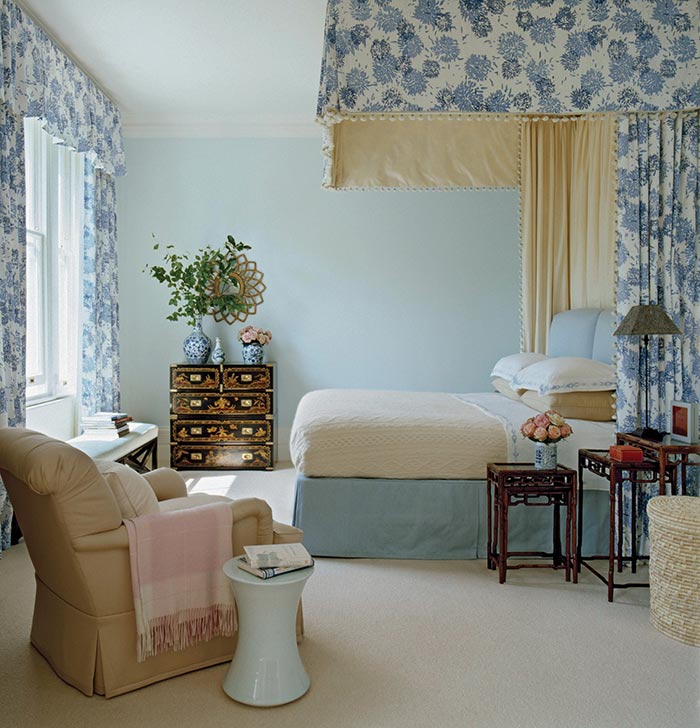
patterned cotton animate the
bedhangings and curtains of this charming bedroom. Photo by Simon Upton.
